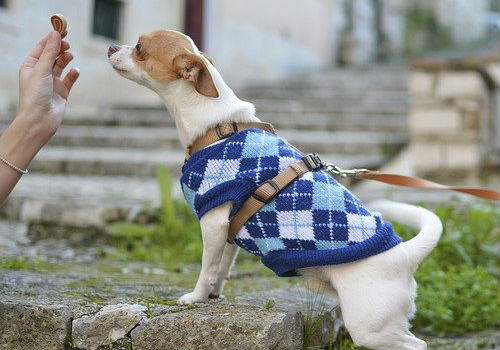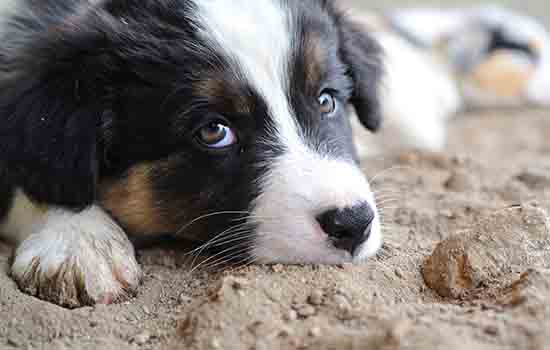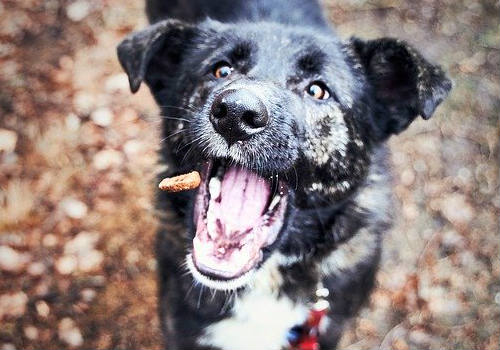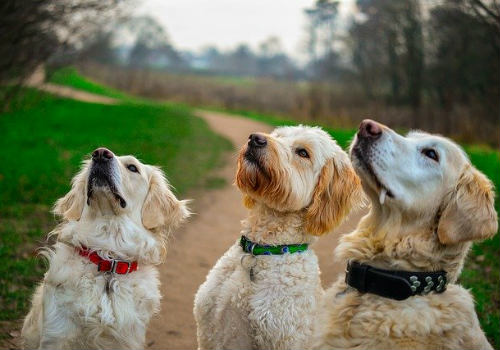There’s no denying that
But too much of anything can be bad, and that’s especially true for treats.
Giving your dog too many treats or giving them when they’re not earned can have many unpleasant consequences. He’ll become pretty spoiled and more prone to misbehavior if he doesn’t get treats whenever he wants them.
So as enjoyable as treats are, they’re best saved for special occasions and as rewards for good behavior. It’s easier said than done, but don’t worry!
Here’s everything you need to know about what to do before giving your dog a
Positive Reinforcement 101

The best way to give your dog treats is as part of a positive reinforcement training regimen.
Training doesn’t stop once your dog masters “sit” and “stay.” It’s a lifelong commitment to maintaining desired behaviors and discouraging unwanted ones, and most dog behaviorists agree that positive reinforcement is the ideal training method.
Rewards, Not Retribution
Positive reinforcement involves rewarding good behavior and ignoring or redirecting (not punishing) bad behavior.
This is the opposite of negative reinforcement, which entails punishing bad behavior with scolding and other types of negativity.
The distinction is important because, as smart as dogs are, they don’t usually make the connection between their punishment and the action that caused it.
If you walk in on your dog chewing your shoe and scold him, he has no idea why — is it because of the chewing, or because he’s lying in that spot, or because of that particular shoe, or something else entirely?
Positive reinforcement, however, establishes a clear link between good behavior and rewards, including treats. It teaches your dog that when he performs a certain behavior, he gets attention, pets, praise and treats, all of which he loves and wants more of.
That way, in the future, he’ll be more likely to repeat that behavior and get those rewards again. Dogs are motivated by getting good things, not avoiding bad things.
Treating the Situation

So how would you apply positive reinforcement to the aforementioned shoe-chewing example?
Well, for starters, you’d take the shoe away and give your dog a stern but calm “no!” at a regular volume. Resist the urge to say any more or react in additional ways — the goal is to stop the act as it’s happening without giving your dog any extra attention.
Then walk away for a few minutes and let him calm down. It’s not that he needs time to think about what he’s done, it’s that enough time needs to pass so he doesn’t connect his prior behavior with what’s about to come next.
After some quiet time, give your dog a suitable object for chewing, like a toy or a bone. Once he starts chewing, it’s time to break out the affection.
Give your dog lots of pets as he chews his owner-approved object, and tell him he’s a good boy in your most loving voice. The objective is to get him to associate your attention and affection with his appropriate chewing material and his calm state.
And then it’s time for treats. But there’s a right way and a wrong way to give them, so don’t break them out just yet!
The Right and Wrong Way to Give a Dog a Treat
Even owners who understand and implement positive reinforcement make mistakes when it comes to giving treats. Believe it or not, the way you give treats can make or break your training success.
How Not to Give a Dog a Treat

Let’s get the wrong way out of the way first. Certain
Many people try to make their dogs “work” for their treats by holding them high up in the air. They’ll give the dog a quick sniff of the
The intention is to make the dog sit calmly and wait to be given his
It also reinforces your dog’s drive to jump, and he won’t just apply it during
That’s not to say that you should just give in if your dog starts jumping when you reach for the treats. But deliberately teasing him by offering and then withdrawing treats when he’s been good beforehand just confuses him and negates your hard training work.
How to Give a Dog a Treat the Right Way
The right way to give your dog a
Hold the
Offering the
If your dog is particularly rowdy and loses his mind at the mere sight of a
This greatly reduces the amount of pre-
Remember: your dog has already earned the
Timing and Moderation: The Keys to Successful Treat Giving

There’s one other thing to consider when giving a dog a
Dogs should only get treats as rewards for good behavior. If you give them to him at other times, he won’t be able to make the association between his good behavior and the treats he gets in return — he’ll just think he gets treats randomly.
This will make him far less likely to repeat his good behaviors and more likely to simply do everything he can to get your attention.
And the worst thing you can do is give your dog a
It’s also important to consider the treats themselves: small, lower-calorie treats are healthier and more effective than larger, higher-calorie treats. If your dog fills up on big treats, he’ll be too full to care if you try rewarding his good behavior with more — plus he’ll likely put on a few pounds!
Smaller treats can be given more frequently, which means you’ll be able to reinforce more good behaviors. And they’ll make it a lot easier to keep your dog healthy: it’s recommended that no more than 10% of your dog’s daily calorie intake comes from treats.
